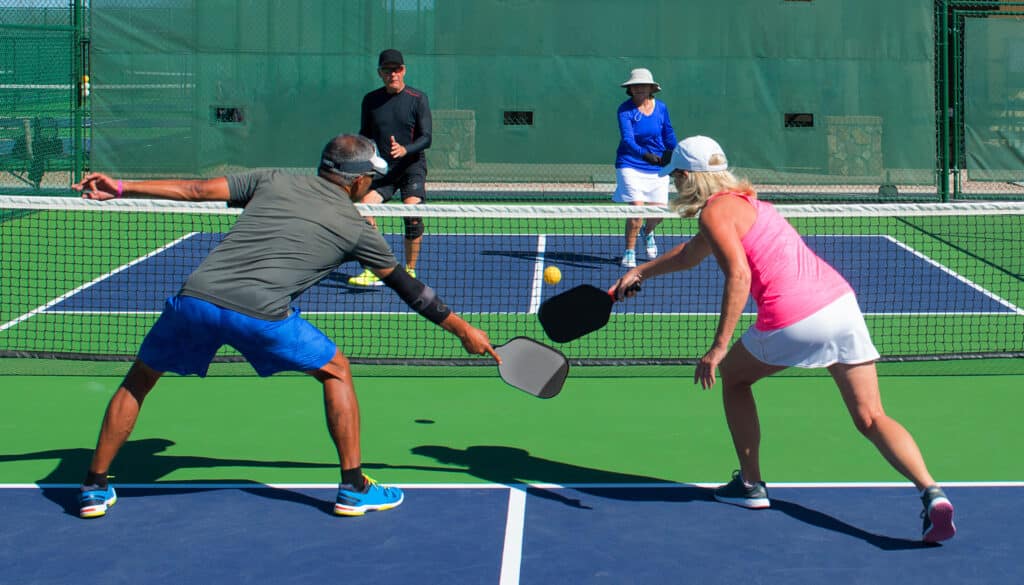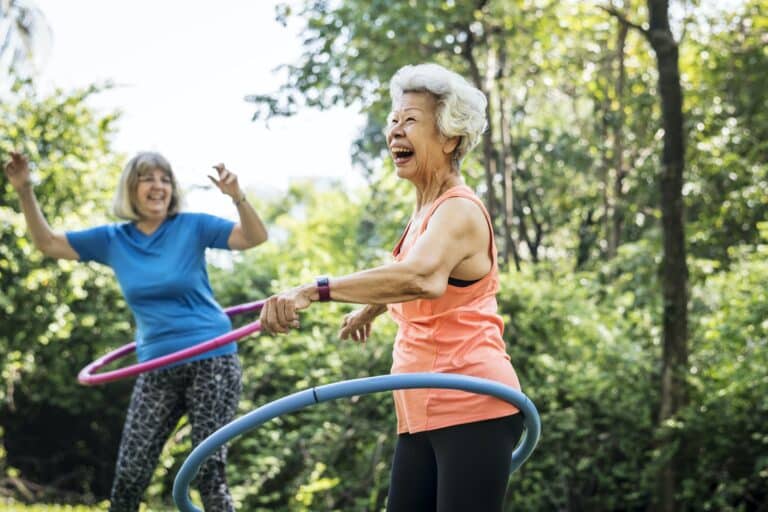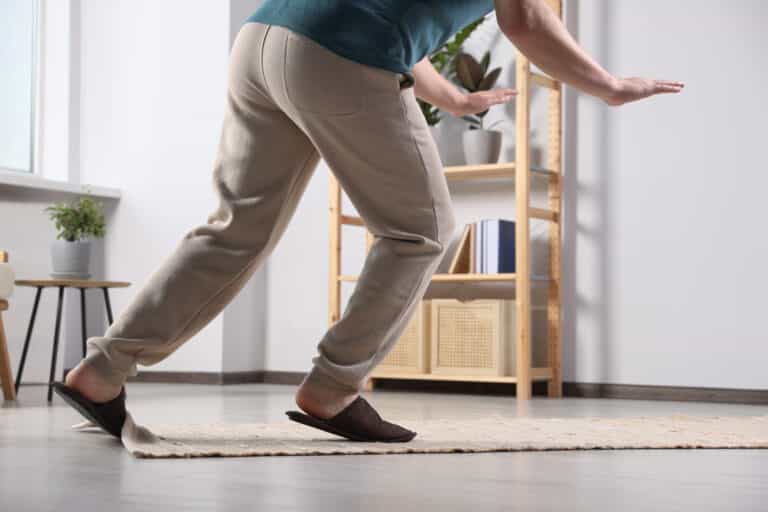Wondering about how you can avoid pickleball injuries?
Pickleball is a fun and social game rapidly gaining popularity, especially among seniors. It’s easy to learn and can be played at various difficulty levels. However, as with any physical activity, there is a risk of injury.
Injuries can occur in most of the body’s major joints. Still, they can be managed or even avoided through effective warm-ups, tweaks to technique, and even hydration or clothing strategies.
This article will give you a clear idea of the best ways to avoid pickleball injuries before they occur.
Common Causes of Pickleball Injuries
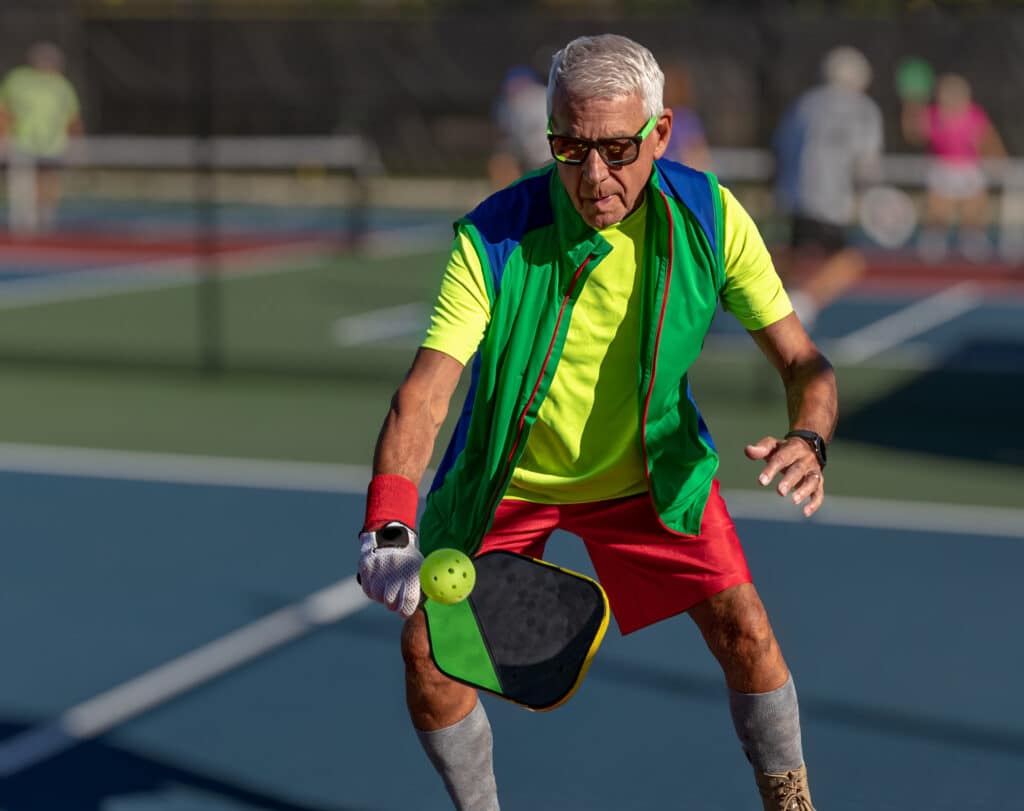
More and more of my senior patients are enthusiastically taking up pickleball. It’s a paddle sport that combines elements of badminton, table tennis, and tennis.
While pickleball is generally a low-impact sport, it’s not without its potential pitfalls. The most common injuries I’ve seen in my patients include ligament sprains, muscle strains, and bone fractures, which typically affect the shoulder, ankle, or knee.
About 54% of the core players (those who play pickleball more than eight times yearly) are fifty-five and older.1
However, people aged fifty years or older accounted for 90.9% of the patients who presented to the emergency room with pickleball-related injuries.2
That’s a significant number that shouldn’t be taken lightly. But why are these injuries so common among pickleball players?
There are a few reasons:
Sport-Specific Movements
First, the movements involved in pickleball—quick starts and stops, side-to-side movement, and repetitive arm motions—can strain joints and muscles.
The rapid changes in direction can put undue stress on the ankles and knees, making them more susceptible to sprains and strains, especially if those muscles haven’t been properly strengthened and activated before playing.
Repetitive motions like swinging the paddle, running, and jumping can lead to overuse injuries in the ankles, knees, wrists, elbows, and shoulders, such as tendonitis or stress fractures.
Lack of Preparation
Second, many players are new to the sport and may not be familiar with proper technique or safety precautions. Many of these players may have never played a sport before trying out pickleball.
I love encouraging my patients to get active, even when they have not done so before. But, learning the proper technique and performing basic stretching and conditioning before playing can be the key to success.
Poor technique or lack of proper training can increase the risk of injuries in pickleball players. Incorrect footwork, swinging technique, or improper landing after jumps can strain the joints, leading to injuries immediately and over time.
Most pickleball courts have hard surfaces, such as asphalt or concrete. These surfaces provide less cushioning than softer surfaces, increasing the impact and ground reaction forces on joints during movements and increasing the risk of injuries.
Pre-Existing Conditions
Finally, older players may have pre-existing conditions, such as osteoporosis or arthritis, that make them more susceptible to injury.
Pickleball is popular among older adults with joint issues or reduced flexibility. They often are more prone to injuries due to age-related changes in the musculoskeletal system, which can decrease muscle strength and elasticity, increase required recovery time, and impair the cardiovascular system.2
Overall, the fast-paced nature of the sport, court surface, repetitive motions, age demographics, and technique contribute to the high incidence of injuries among pickleball players.
A Guide to The Most Common Pickleball Injuries
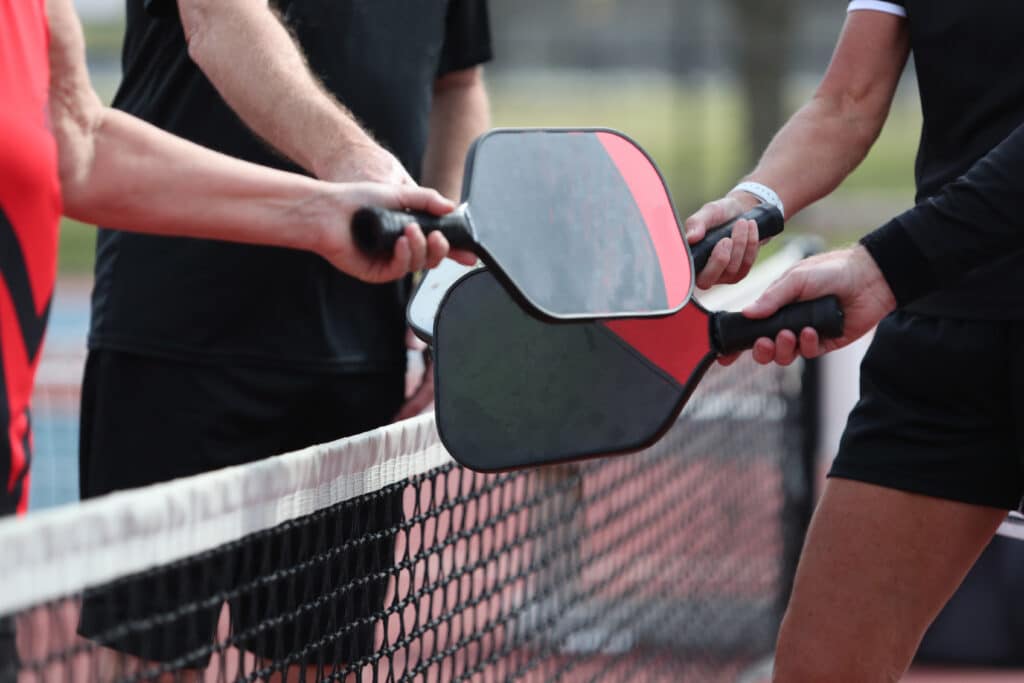
Injuries can happen in many joints and areas during or after a Pickleball match.
But it’s important to note that players may encounter chronic and acute injuries, each presenting distinct challenges and implications for gameplay.
So what’s the difference?
Acute vs. Chronic
Acute injuries typically occur suddenly and are often the result of a specific incident, such as a fall or collision on the court.
Examples include ankle sprains from landing awkwardly or wrist strains from sudden impacts. These injuries can sideline players immediately and may require immediate medical attention to address pain and swelling.
Chronic injuries develop over time due to repetitive stress or overuse of certain muscles or joints.
Conditions like tendonitis or stress fractures may gradually worsen with continued play, leading to persistent discomfort and reduced performance.
Managing chronic injuries often involves modifying gameplay, incorporating rest periods, and implementing rehabilitation exercises to strengthen affected areas and prevent further damage.3
Both acute and chronic injuries require attention and proper management to ensure pickleball players can continue enjoying the sport safely and effectively.
The Most Common Pickleball Joint Injuries
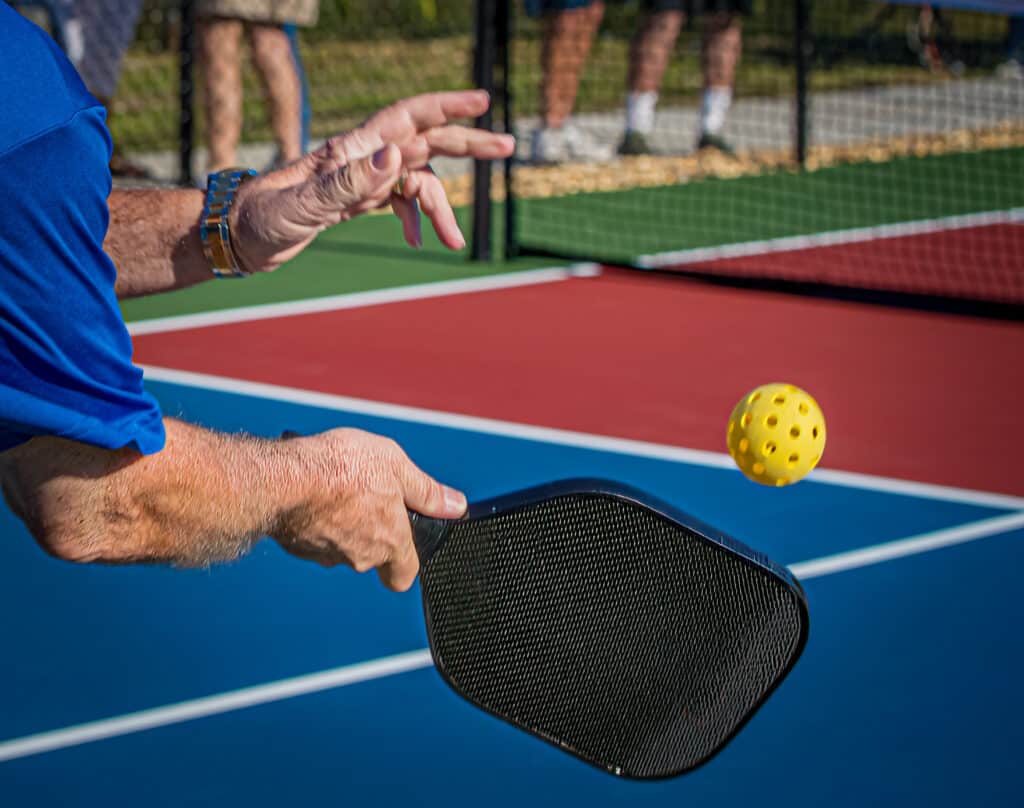
Shoulder Injuries
While generally considered a low-impact sport, pickleball can still lead to shoulder injuries from overuse, poor technique, or inadequate warm-up practices.
Weakness of muscles supporting the shoulder while performing repetitive, overhead movements can be a recipe for trouble. These factors contribute to unnecessary strain on the shoulder joints and muscles during gameplay.
One common issue pickleball players may encounter is rotator cuff impingement, where the tendons of the rotator cuff muscles become trapped and compressed during shoulder movements.
Another prevalent problem is shoulder bursitis, characterized by inflammation of the small fluid-filled sacs in the shoulder joints.
Recognizing warning signs such as constant shoulder pain in the front of the shoulder or the shoulder blade region, arm weakness, or difficulty lifting objects is essential. Early detection of these symptoms is crucial for prompt intervention. Consulting a healthcare professional, like a physical therapist, especially if symptoms persist, is strongly advised.
Treatment for shoulder injuries can vary depending on their severity. Options may include rest, physical therapy, medication, or, in severe cases, surgery.
Knee Injuries in Pickleball
Knee injuries are another common concern for pickleball players. They range from mild sprains and strains to more severe conditions like patellar tendonitis, ligament tears, or meniscus tears.
These injuries often stem from the sudden stops and pivots inherent in pickleball gameplay and the repetitive jumping required during matches.
Never overlook symptoms such as persistent knee pain, hearing a popping noise during movement, or experiencing difficulty bending the knee. These signals could indicate a more serious knee injury.
Any inflammation in the knee joint during or after a game should be treated with rest, ice elevation, and a professional assessment, especially if it is accompanied by pain.
Wrist and Elbow Injuries
Wrist and elbow injuries are prevalent among pickleball players, with conditions like lateral epicondylitis (also known as tennis elbow) and wrist strains being commonly reported.
Lateral epicondylitis, characterized by pain and inflammation on the outer part of the elbow, can develop due to repetitive gripping and swinging motions during pickleball play. Similarly, wrist strains can occur from the repetitive movements involved in paddle swings and ball impacts.2,4
Players experiencing persistent pain, tenderness, or weakness in the wrist or elbow area should take heed, as these symptoms may indicate underlying injuries that require attention.
Wrist injuries may require wearing a brace to stabilize during play and prevent overextension. They are also a sign of improper technique, as you shouldn’t be so reliant on wrist movement for all your shots.
Ankle and Foot Injuries in Pickleball
Ankle injuries are a significant concern for pickleball players, often resulting from the quick lateral movements, sudden stops, or incorrect landings commonly encountered during gameplay.4
Seek medical attention if you notice ankle pain or swelling or experience difficulty walking after playing pickleball. Delaying treatment could potentially lead to chronic ankle instability, prolonging recovery time and increasing the risk of further injury.
In addition to ankle injuries, plantar fasciitis is a common foot injury that can affect pickleball players. It causes pain and discomfort in the bottom of the foot, particularly near the heel.
The repetitive jumping, running, and quick movements required in pickleball can exacerbate this condition. They strain the plantar fascia, a thick band of tissue that supports the foot arch. This can often result when players do not have the proper supportive footwear during the game.
Players with plantar fasciitis may experience sharp or stabbing pain in the heel, especially after prolonged periods of activity. Proper footwear, adequate stretching, and supportive insoles can help alleviate symptoms and prevent further aggravation of plantar fasciitis in pickleball players.
Managing Injuries When They Occur
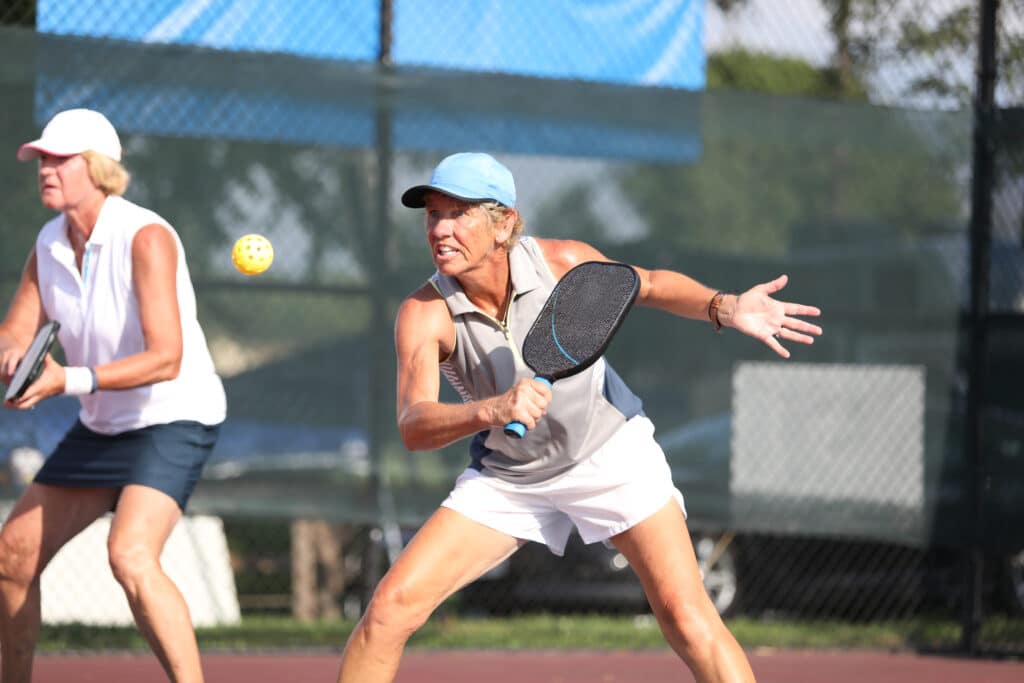
As a medical professional, I can attest to the importance of personalized care in treating pickleball injuries, whether to the shoulder, knee, wrist, elbow, or ankle. The body’s response to treatment varies from person to person, making individualized guidance from healthcare providers crucial.
Treatment options for these injuries often overlap:
- Rest and physical therapy exercises are typically recommended to strengthen the surrounding muscles and improve flexibility.
- Icing can help reduce inflammation, while supportive devices like braces or splints may stabilize the affected area.
- Over-the-counter pain relievers or anti-inflammatory medications are often suggested to manage discomfort.
- In cases of severe injuries or when conservative treatments are ineffective, medical intervention such as corticosteroid injections or surgery may be necessary.
For instance, ankle sprains with ligament damage may require physical therapy to restore strength, flexibility, and proprioception (awareness of body position). Surgery may be required to repair damaged ligaments or stabilize the joint in rare cases.
Self-diagnosis and treatment can potentially worsen the condition and prolong recovery, so seek medical assistance soon after injuries occur. Remember, your health is paramount during any activity; taking the right steps toward recovery will ensure you’re back on the court quickly.
How To Prevent Pickleball Injuries
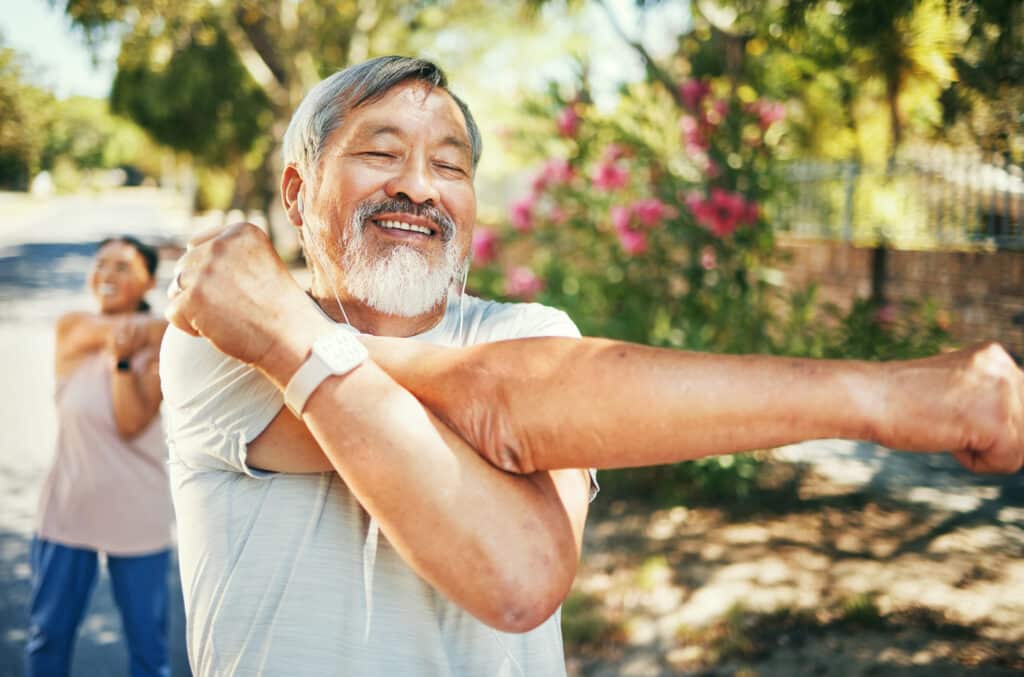
Throughout my years of clinical practice, I’ve witnessed the effectiveness of proactive prevention strategies in reducing injuries among pickleball players.
Prioritizing proper warm-up routines, employing correct techniques during gameplay, and paying attention to warning signs from your body can limit the risk of these common pickleball injuries.
Warming Up and Stretching: The First Step
Before you can serve, volley, or smash, it’s important to gently warm up your muscles. A good warm-up session does more than prepare your body for physical activity; it protects against injuries.
Our muscles and joints can become stiffer and less flexible as we age. Incorporating a warm-up routine can help prevent aches and pains.
One practical exercise to consider is brisk walking or light jogging for 5-10 minutes. This boosts your body temperature and blood flow, making muscles more flexible and less injury-prone.
Then, perform dynamic stretches to target the areas you’re preparing to use. Examples include arm swings, leg swings, and side-to-side lunges to focus on your major muscle groups.
Arm Swings
Stand in an open area, like the center of the court, and rotate at your waist, gently swinging your arms. Do this for a minute or more to get some blood flow to your arms and hands
Leg Swings
Stand with one hand on a stable surface and swing your leg in a kicking motion, allowing your foot to brush the ground. Similarly to arm swings, this can help promote circulation to the legs. Swing each leg for around one minute.
Side-to-Side Lunge
After completing one or more sets of leg swings, stand with a stance about double hips width. Bend your right knee while keeping your left knee straight, leaning your body weight to the right. Then switch and do the same to the left.
Complete 8-10 repetitions in each direction before beginning your match. This stretch will help to prepare your body for the movements required during pickleball.
Choose the Right Equipment and Clothing
Choosing the right equipment and attire can also be a game-changer in preventing pickleball injuries.
Start with a good pair of shoes specifically designed for court sports. Such shoes offer better grip and stability, reducing the risk of falls, slips, and ankle sprains.
Wearing improper footwear, even athletic shoes for running or other activities, may not provide the support and stability needed to prevent injury on the court.
Additionally, consider using a lightweight paddle. This can help prevent arm and shoulder strain, particularly if you play for extended periods. Although a paddle may not feel especially heavy initially, repetitive movements with a weighted instrument that your body is not adjusted to can lead to strain.
Start with a lighter paddle, let your body adapt, and then consider a heavier one. Oftentimes, a light paddle is perfectly sufficient for most players.
Overly heavy clothing or constriction might lead to heat stroke or other preventable injuries. Opt for comfortable, breathable clothing that allows for unrestricted movement.
Remember, the goal isn’t just to play well but also to feel great!
Practice Good Form to Make Safety a Priority
While pickleball is a fun and engaging sport, it’s essential to understand the proper playing technique to play it safely.
For instance, correctly swinging the paddle can help prevent elbow and shoulder injuries, commonly known as tennis (or pickleball) elbow.
Similarly, adopting the right stance can improve balance and reduce the risk of falls. An athletic stance with knees bent and feet hips-width distance creates a stronger base of stability. It’s a more stable foundation for the movements required during a match.
Conversely, standing rigidly with your legs straight and your feet close together might risk toppling over or tripping. The position also provides limited mobility to move quickly.
Additionally, be mindful of your body’s limitations. As a medical professional, I’ve seen my share of patients who’ve pushed themselves too hard.
When you talk with them after they get injured, they can usually cite the moment they knew they should have taken a break but pushed through instead. It’s essential to listen to your body and take breaks as needed.
Rest and Recovery for Safer Play
It’s easy to get caught up in the thrill of the game, but rest and recovery are just as important as the game itself. Make sure to rest between games and hydrate adequately. Also, consider incorporating a cool-down routine with static stretches to help your muscles recover.
Pickleball is a great way to stay active and socialize, but like any sport, it’s important to play it safely. With the right precautions, you can enjoy this fun game while minimizing your risk of injury.
Remember, injury prevention isn’t just about avoiding pain; it’s about ensuring you can continue to enjoy the activities you love as you age. With these tips, you can keep playing pickleball safely and effectively for many years.
Ultimately, it’s essential to prioritize your health and well-being above all else. No game or sport is worth jeopardizing your physical health, so always listen to your body and take appropriate measures to prevent and address injuries when they occur.
Remember, maintaining good health is invaluable in enjoying pickleball and other physical activities for years to come.
Summary
In conclusion, pickleball is undoubtedly an enjoyable and increasingly popular sport, particularly among older adults seeking a fun and social way to stay active. However, as with any physical activity, pickleball comes with inherent risks of injury, ranging from acute incidents like ligament sprains and muscle strains to chronic conditions like tendonitis and stress fractures.
Understanding the common types of injuries associated with pickleball, such as those affecting the shoulders, knees, wrists, elbows, ankles, and feet, is essential for players to recognize and address potential issues promptly.
By implementing preventive measures like proper warm-up routines, using correct technique, staying hydrated, and wearing appropriate attire and equipment, players can significantly reduce their risk of injury and prolong their enjoyment of the sport. Prioritizing health and well-being is paramount, ensuring pickleball remains a safe and rewarding activity for all participants.
Key Takeaways
- Pickleball is a popular sport among seniors but can lead to injuries in the shoulder, knee, wrist, elbow, ankle, and foot.
- Ligament sprains, muscle strains, and bone fractures are the most common injuries.
- Injuries often result from sport-specific movements, lack of preparation, and pre-existing conditions.
- Acute injuries occur suddenly due to a specific incident, while chronic injuries develop over time due to repetitive stress.
- Shoulder injuries can result from overuse, poor technique, or inadequate warm-ups, leading to rotator cuff impingement or shoulder bursitis.
- Knee injuries often stem from sudden stops and pivots in the game, leading to conditions like patellar tendonitis or meniscus tears.
- Wrist and elbow injuries are common due to repetitive gripping and swinging motions, causing conditions like lateral epicondylitis and wrist strains.
- Ankle injuries and plantar fasciitis are common foot injuries in pickleball due to quick lateral movements, sudden stops, or incorrect landings.
- Preventing injuries involves warming up and stretching, choosing the right equipment and clothing, practicing good form, and allowing time for rest and recovery.
- It’s crucial to prioritize health and well-being above all else, listen to your body, and take appropriate measures to prevent and address pickleball injuries when they occur.
References
- Webber, S. C., Anderson, S., Biccum, L., Jin, S., Khawashki, S., & Tittlemier, B. J. (2022). Physical activity intensity of singles and doubles pickleball in older adults. Journal of Aging and physical activity, 31(3), 365-370.
- Vitale, K., & Liu, S. (2020). Pickleball: review and clinical recommendations for this fast-growing sport. Current sports medicine reports, 19(10), 406-413.
- Greiner, N. (2019). Pickleball: injury considerations in an increasingly popular sport. Missouri medicine, 116(6), 488.
- Pergolizzi Jr, J., Matera, J., & LeQuang, J. A. K. (2023). Treating geriatric sports injury among pickleball players: a narrative review of an exercise craze among seniors. Cureus, 15(12).

